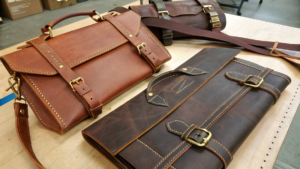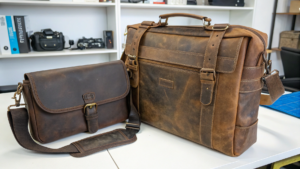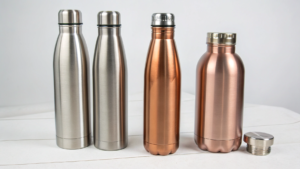What are the differences between notebook covers?
Do you only think about the paper inside a notebook? The cover matters too! Different covers feel different and say different things about your brand.
Notebook covers differ mainly in the material used, which affects how they feel, look, and last. Common materials include cardboard, PU leather, real leather, kraft paper, and plastic. The choice of cover impacts the notebook's durability, cost, and perceived value.

When most people pick a notebook, they check the lines or the paper quality. But I have learned from years in this business that the cover is a very strategic part of the design. It is not just there to protect the pages. The cover tells you about the notebook's purpose. It signals who it is for. It also gives a first impression of a brand. I have seen many types of covers made. They all have a different feel and use. The material of the cover is a key decision. It affects everything from how it looks to how long it lasts and how much it costs.
What are the most common types of notebook covers?
Have you seen notebooks with many different covers? Do you wonder what materials are used? Knowing common types helps you pick the right one.
The most common types of notebook covers are made from cardboard, PU leather, genuine leather1, kraft paper, and various plastics. Each material offers different levels of durability, flexibility, texture, and suitability for different branding methods.

From working in the factory, I got to know the materials well. The cover is the face of the notebook. Its material is a big deal. The common types you see everywhere use just a few main materials. Cardboard is very common. It is often used for simple, everyday notebooks. It is not the most durable, but it is affordable. Kraft paper covers give a natural, earthy feel. They often signal that the notebook is eco-friendly or recycled. Plastic covers, like polypropylene, are tough. They are good for notebooks that need to handle rough use or get wet, like for students or outdoor workers.
Then there are the materials that feel more premium. PU leather2 is popular now. It looks and feels a lot like real leather but is less expensive. It is also easier to work with for customization. Genuine leather is the most premium option. It is very durable and looks very classic. Each material has its own strengths and weaknesses.
Here is a look at some common materials:
- Cardboard: Often covered with printed paper. Affordable. Not very durable. Lightweight. Good for simple notebooks or pads.
- Kraft Paper: Brown, textured paperboard. Often recycled. Gives a rustic or eco-friendly look. Can be less durable than other options.
- Plastic (Polypropylene, PVC): Flexible or rigid. Very durable. Water-resistant. Easy to clean. Can sometimes feel less premium depending on the finish. Good for heavy use or outdoor use.
- PU Leather: Polyurethane coated fabric. Looks and feels like real leather. Durable. Available in many colors. Good balance of premium feel and cost. Excellent for corporate branding.
- Genuine Leather: Natural animal hide. Very durable. Develops a patina over time. Highest cost. Feels very luxurious and high-end. Used for premium notebooks.
The choice of material is a big part of the notebook's story. A rugged plastic cover says something different than a soft PU cover. When a brand chooses a cover material for a promotional notebook, they are choosing the first physical impression they want to make. A cheap-feeling cover might suggest the brand cuts corners. A nice-feeling cover suggests quality and care. From my experience working with international buyers, the cover is one of the first things they touch and judge. It really impacts if they see the notebook as something valuable to keep or just another item.
| Cover Material | Key Characteristics | Feel | Typical Use Cases |
|---|---|---|---|
| Cardboard | Lightweight, affordable, printable | Basic | Everyday notes, basic pads |
| Kraft Paper | Recycled look, textured | Natural | Eco-friendly, simple journals |
| Plastic | Durable, water-resistant, flexible | Smooth/Stiff | Student, outdoor, heavy duty |
| PU Leather | Looks like leather, consistent finish | Soft/Smooth | Corporate gifts, journals, planners |
| Genuine Leather | Very durable, develops patina, unique | Premium | High-end gifts, executive notebooks |
Each material has a purpose and appeal. Choosing the right one is about matching the notebook's function and the brand's image.
What is a PU cover notebook?
Have you heard of PU leather covers? Do you wonder what they are made of? You want to understand this popular material.
A PU cover notebook uses Polyurethane (PU) to create a cover that looks and feels like genuine leather. PU is a synthetic material applied as a coating to a fabric base. It is popular because it offers a premium look and feel at a lower cost than real leather.

PU covers have become very common, especially in corporate gifting. Before PU became popular, the choices were often cardboard, fabric, or expensive genuine leather. PU offered something new. It gives the look of leather. It gives a similar soft touch. But it is made by humans, not from animals. From a production side, PU is consistent. A roll of PU material will have a very uniform color and texture. Real leather has natural variations. This consistency in PU makes printing and customization more predictable.
Why is PU so popular?
- Appearance: It can be made to look very much like different types of leather (smooth, textured, etc.).
- Feel: Many PU finishes are soft to the touch, giving a premium feel.
- Cost: It is significantly less expensive than genuine leather.
- Availability: PU comes in a huge range of colors that are hard to find in real leather.
- Customization: PU works well with various branding methods like embossing, debossing, screen printing, and foil stamping.
- Consistency: Unlike real leather, the texture and color are uniform across large batches.
- Eco-Conscious Appeal: While synthetic, it is often seen as an alternative for those avoiding animal products, giving it a certain appeal.
I have worked with many brands that choose PU covers. They like that it looks high-quality. It feels good in the hand. But it fits their budget better than real leather, especially for larger orders. The ability to get it in exact brand colors is also a big plus. When we emboss a logo on a soft-touch PU cover, it creates a very clean, elegant look. This tactile impression of softness and the visual of the embossed logo combine to give a feeling of quality and attention to detail.
In my view, the PU cover hits a sweet spot. It is durable enough for daily use. It feels good, making the notebook a pleasant item to interact with. It looks premium, which reflects well on the brand giving the gift. And it is flexible enough for many types of branding. This makes it a very strategic choice for promotional notebooks. It is not just about the material itself, but what that material communicates about the brand. A PU cover notebook signals value, modernity, and broad appeal.
| Feature | PU Cover vs. Genuine Leather | Advantage of PU for Promo |
|---|---|---|
| Cost | Lower | More affordable for bulk orders |
| Color Range | Much wider | Easier to match brand colors exactly |
| Consistency | High (texture, color) | Predictable branding results |
| Customization | Works well with many methods | Versatile for different brand styles |
| Feel | Can feel very similar (soft touch) | Provides a premium feel without high cost |
| Eco Perception | Often seen as an alternative | Appeals to some audiences |
Understanding what PU is helps you see why it is such a popular and effective choice for corporate gift notebooks. It offers many benefits for both look and feel, and for branding.
What materials make notebook covers durable?
Want a notebook cover that lasts? Do you need a gift that can handle being carried around? Durability is key for long-term brand exposure.
Durable notebook covers are typically made from materials that resist tearing, bending, and moisture, such as hard cardboard, plastic (like polypropylene), and genuine or PU leather. The thickness and quality of the material, along with the binding method, also contribute to durability.

A notebook cover needs to protect the pages inside. If the cover falls apart quickly, the notebook becomes less useful. For a promotional item, a short-lived notebook means short-lived brand visibility. So, durability is very important. From a manufacturing perspective, we look at how the material holds up to bending, scratching, and moisture. Materials like thin paperboard are not very durable. They bend easily and can tear or get damaged by spills.
Materials known for durability include:
- Hard Cardboard (like 2mm thick): When used with a good outer wrap (like laminated paper or cloth), thick cardboard makes a stiff, protective cover. This is common for hardcover notebooks.
- Plastic: Polypropylene and other plastics are very resilient. They can be bent repeatedly without breaking. Many are naturally water-resistant. This makes them excellent for notebooks used in challenging environments or carried loosely in bags.
- PU Leather: This material is generally quite durable. The polyurethane coating provides a layer that resists scratches and spills better than paper or thin card. It can withstand regular handling.
- Genuine Leather: Historically, leather has been used for covers because it is extremely durable and gets better with age. It is resistant to wear and tear.
The way the cover is attached to the pages (the binding) also affects how durable the whole notebook is. A strong binding, like Smyth-sewn or a robust spiral/wire-o, helps the cover stay attached even with heavy use. A perfect bound notebook (glued spine like a paperback book) might be less durable at the cover joint if the cover material is too stiff or the glue is not strong.
When choosing a cover material for a gift, think about how the recipient will likely use it. Will it stay on a desk? Will it be thrown into a backpack every day? Will it be used outdoors?
- Desk Use: Hardcover cardboard or PU can be very durable.
- Bag Carry: PU, plastic, or thick card with a protective finish holds up well.
- Outdoor/Heavy Duty: Plastic is probably the most resistant to elements and rough handling.
In my work with corporate clients, they often want a balance of durability and look. PU covers are often the top choice because they offer good durability for everyday use, look great, feel premium, and are good for branding, all at a reasonable cost. They last long enough to provide months of brand exposure, which is the key goal of a promotional notebook. A durable cover ensures the notebook remains a functional item and a positive brand touchpoint for a long time. It prevents the gift from becoming useless junk quickly.
| Material Type | Durability Level | Resistance to Bending/Tearing | Water Resistance | Best For |
|---|---|---|---|---|
| Thin Cardboard | Low | Low | Very Low | Light use, disposable pads |
| Thick Cardboard | Medium | Medium | Low | Hardcover notebooks (with coating) |
| Kraft Paper | Low to Medium | Low to Medium | Very Low | Eco-friendly, gentle use |
| Plastic | High | High | High | Heavy duty, outdoor, student, kids |
| PU Leather | High | High | Medium | Corporate gifts, journals, daily carry |
| Genuine Leather | Very High | Very High | Medium | Premium, executive, heirloom |
Choosing a durable cover material ensures your branded notebook stays intact and useful, maximizing its time as a brand ambassador.
Conclusion
Notebook covers matter because their material impacts feel, look, durability, and what they signal about a brand. Common types like PU, plastic, and cardboard offer different benefits, making the cover choice a key brand strategy.





